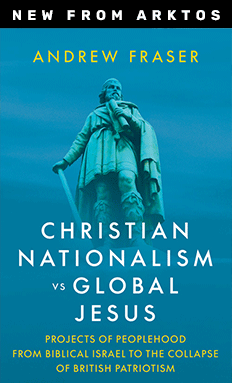Yes, We Are Ruled by Fools
Anastasia Katz, American Renaissance, August 19, 2022
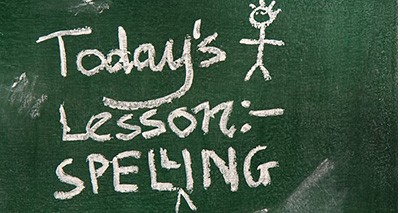
New York City is paying out nearly $1.8 billion to black and Hispanic teachers who were unable to pass a test that was required for them to get a New York State teacher’s license. Thus far, more than half of the plaintiffs in this decades-old class action suit have won compensatory damages; Silvia Alvarez was awarded $1.1 million for being fired from her teaching job in Brooklyn after failing the test ten times. This gravy train is still on the tracks; teachers’ claims are still being processed.
The case goes back to 1996, when a lawsuit was filed against the New York City Department of Education for violating Title VII of the 1964 Civil Rights Act by requiring public school teachers to pass the Liberal Arts and Sciences Test (“LAST”) to keep or get teaching jobs. The test was given by the state of New York as a requirement for a teaching certificate, so when New York City required the test, that meant it was requiring teachers to have the standard state credential. The LAST had an “unlawful disparate impact” on black and Hispanic teachers: Over 90 percent of white test takers passed, compared to fewer than 62 percent of blacks and 55 percent of Hispanics. It was widely reported that the test was “biased.”
When American Renaissance published this story, some of our readers wondered what kind of questions were on the test. I decided to find out. I got Barron’s study guide for the LAST.
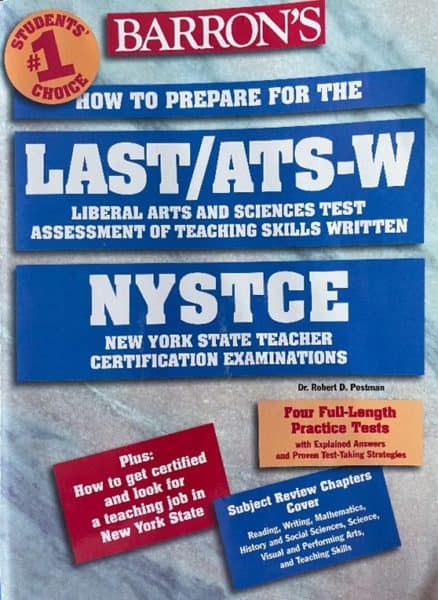
Barron’s has been publishing study guides for 80 years, and sells test prep materials for high school, college, and professional licensing exams. These study guides typically include practice tests. If you can pass the practice tests, you can pass the actual test.
My study guide explained that the test was given four times a year. That means the teacher who took the test 10 times before losing her job had been on the job without a teacher’s certificate for at least two and a half years before she was fired.
The retail price for this study guide was $14.95. You can also borrow the guides for free at public libraries.
The format of the LAST was 80 multiple-choice questions and an essay. Subjects were Reading, English, Writing, Math, Science, History, Humanities, Social Science, Visual and Performing Arts, and Literature. In New York, you need a bachelor’s degree in education to qualify for a teaching certificate. Anyone with a bachelor’s degree should have enough knowledge to pass this test.
Here are sample questions from the practice tests in the study guide.
Reading, English, and Literature:
The practice tests include reading comprehension passages and multiple-choice questions about the passages. Here are some examples.
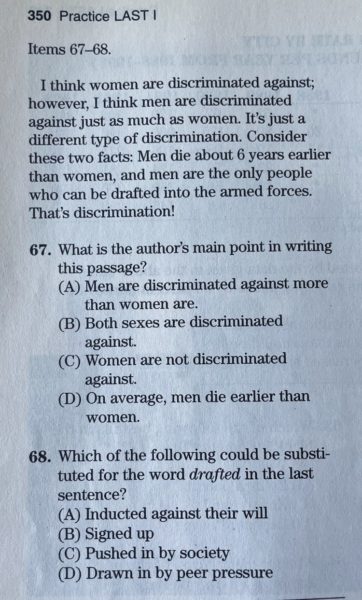
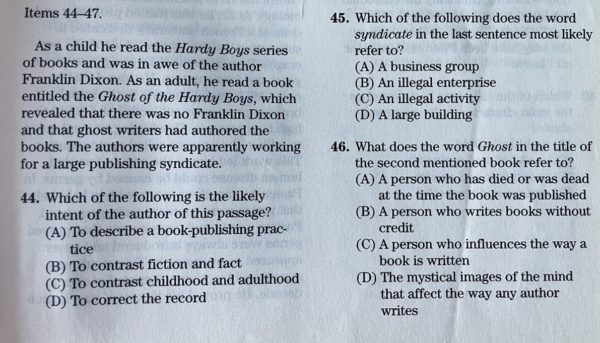
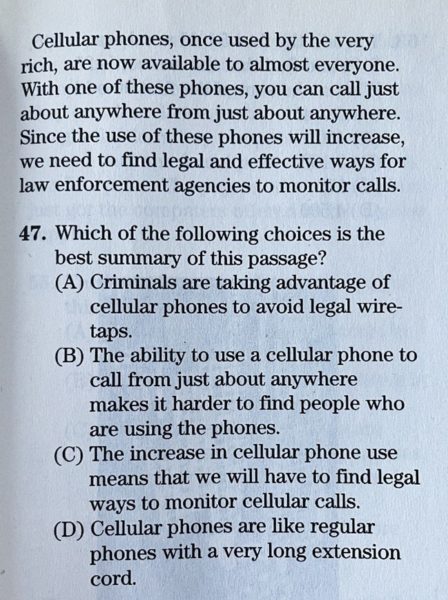
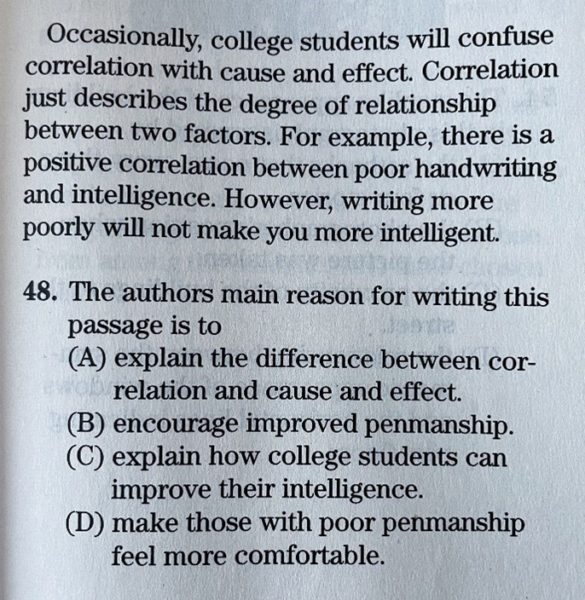

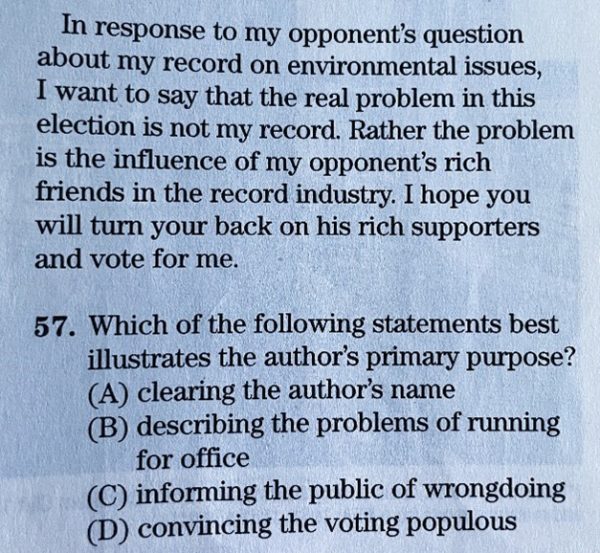

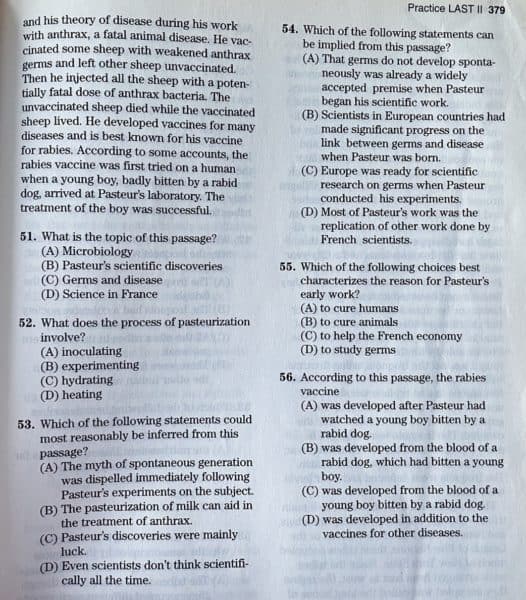

Math:
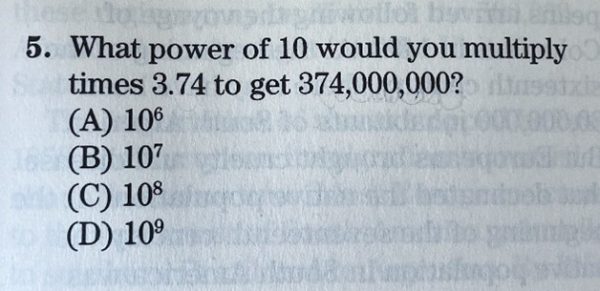
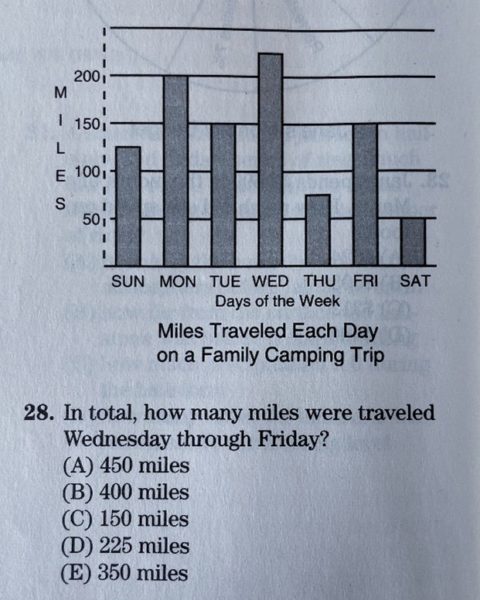
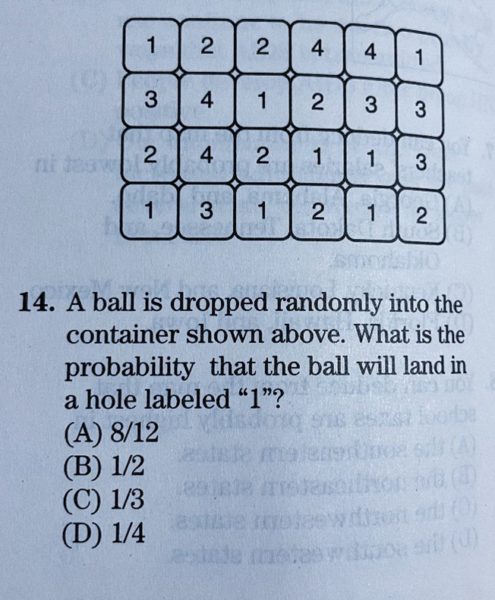
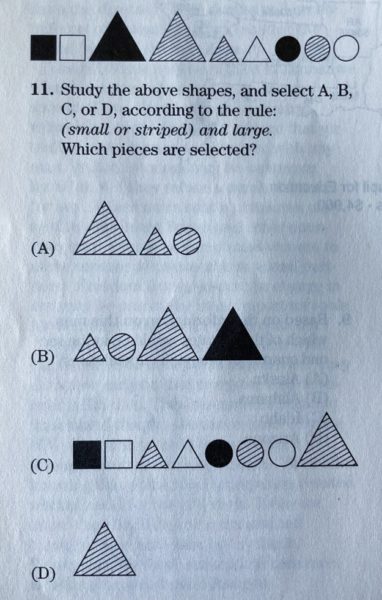
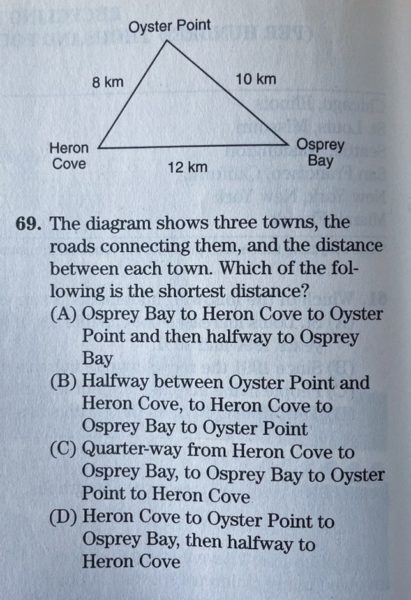
Science:
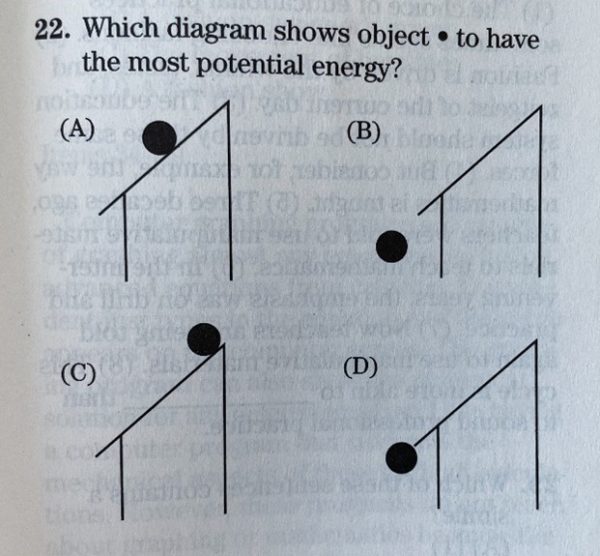
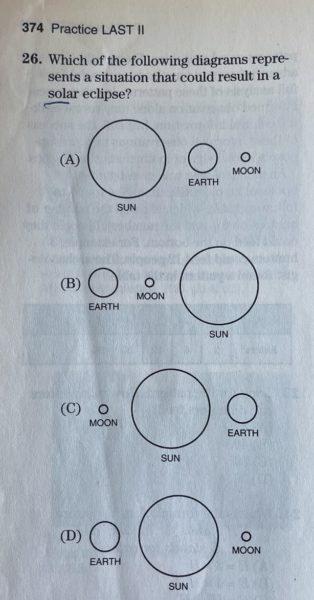
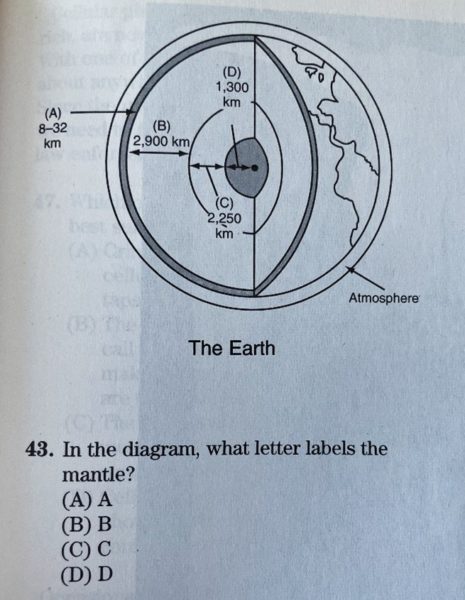
History and social science:


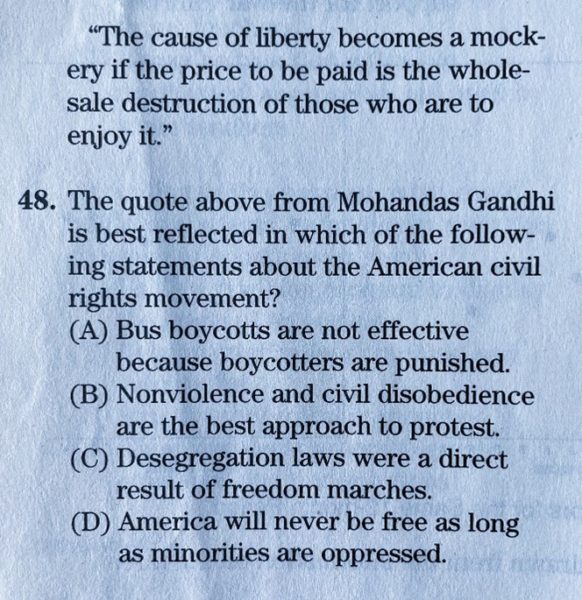
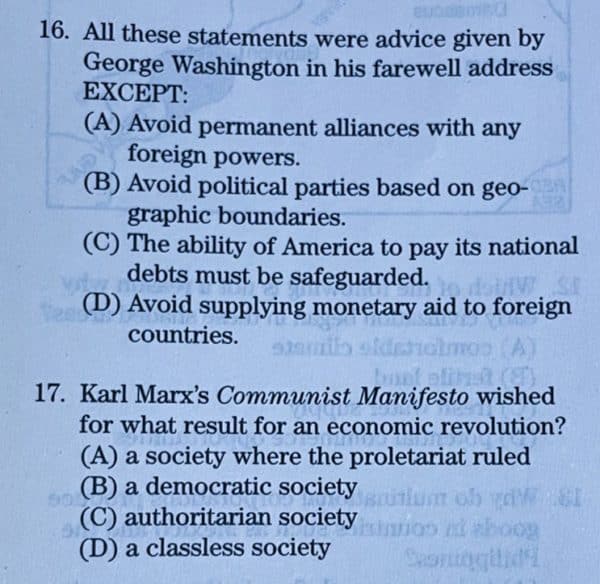
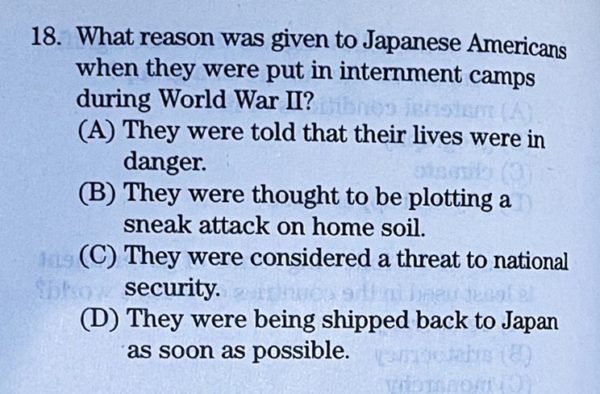
The arts:

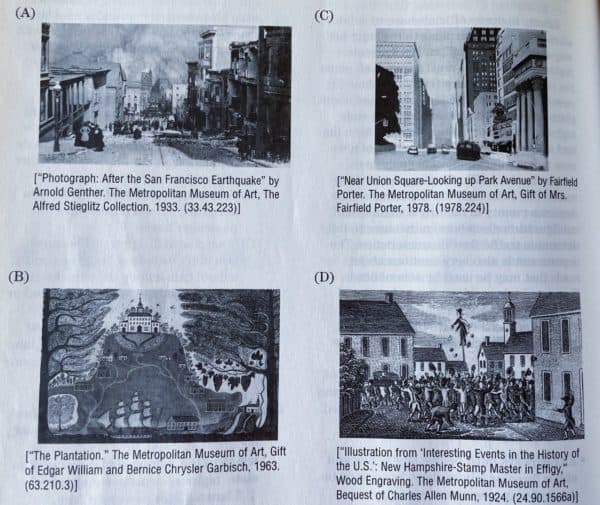

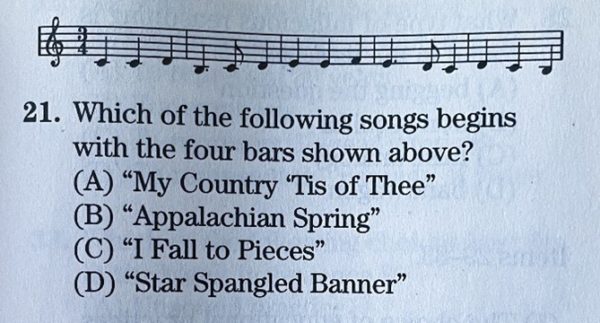
Written essays were scored on a scale of zero to three, with zero being a “poorly developed, incomplete written assignment” that:
- Does not thoroughly respond to the topic.
- Contains only poor, unsupported explanations.
- Contains numerous significant grammatical, punctuation and spelling errors.
An essay earning a score of three is “a well-developed complete written assignment,” that:
- Shows a thorough response to all parts of the topic.
- Has clear explanations that are well-supported.
- Is free of significant grammatical, punctuation or spelling errors.
These are essay questions from the practice tests:
In some schools, students are grouped homogeneously. This is, students with similar ability are grouped together. In other schools, students are grouped heterogeneously. That is, students with differing ability are grouped together. Which grouping approach do you think is better? Write an essay to support your opinion.
For many years, the highest allowable speed limit was 55 miles per hour. More recently, this limit has been raised and you can travel on roads where the speed limit is 70 miles per hour. Do you think having higher speed limits is a good idea or a bad idea? Write an essay to support your position.
Whatever you think of this test, you would think that there must have been an examination of the nature of the questions to show that they discriminated against blacks and Hispanics. That wasn’t necessary. No one ever had to prove that any particular question was especially difficult for blacks and Hispanics or especially easy for whites. Although there were plenty of headlines about the exam being biased, no one had to show how it was biased. The legal argument was based entirely on disparate impact. If different racial groups weren’t getting the same scores, something had to be wrong with test, but no one ever had to show what that was.
Maintaining standards for teachers in a world that expects equal outcomes is hard and — given the all the time spent in court — expensive. After a ruling against the LAST in 2012, New York City tried to use another test that would not violate the law, and again, a lawsuit claimed that test was discriminatory. Kimba Wood, the white female judge who ruled that the LAST violated minority teachers’ civil rights, threw out the second test as well. A third test, the Academic Literacy Skills Test (ALST), was also challenged in court, but in 2015, Judge Wood ruled that the ALST was acceptable.
What’s surprising is that whites, Hispanics, and blacks did not score equally well on it. No genuine test of knowledge or ability gives that result. Sixty-four percent of whites passed the ALST on the first try, while only 46 percent of Hispanics and 41 percent of blacks did. (Like the LAST, teachers could retake the test if they didn’t pass the first time.) There was still disparate impact, but Judge Wood gave the Academic Literacy Skills Test the green light because its content was somehow “representative of the content of a New York State public-school teacher’s job.” Courts had ruled that if an employment test has a disparate impact, it must be one that measures skills necessary for the job.
The ALST tested only for reading and writing, which means that many LAST subjects — math, science, history, humanities, social science, and visual and performing arts — were eliminated.
Elementary school teachers stay with their class the whole day and teach all subjects. Middle school and high school teachers teach only one subject, and for many of them, that subject is math, science, social studies, or the arts. So, how were the eliminated subjects not “representative of the content of a New York State public school teacher’s job?”
Some questions on the LAST practice tests related directly to a teacher’s job:

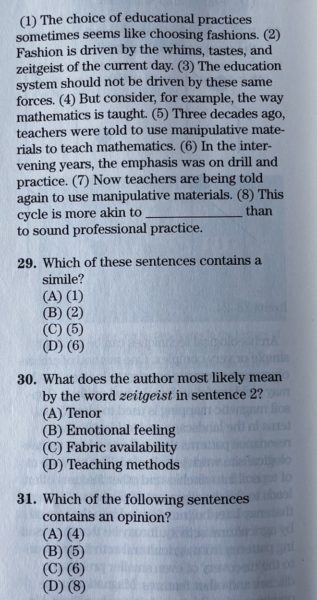
Not everyone was happy after Judge Wood approved the ALST. Michael Middleton, dean of Hunter College School of Education, said that in comparison with other tests for teacher certification, the ALST looked “like it’s the least related to the actual work that teachers do day to day.”
Alfred S. Posamentier, former dean of Mercy College School of Education, believed that the ALST was unfair to Hispanics because it measured “how eloquent a person is in the English language.” He asked, “Is that one of the criterion [sic] for determining who will be a good teacher? My sense is that the answer is no.”
I was an elementary school teacher, and I think it is important for American children to learn to be eloquent in English. They need teachers who are eloquent. The purpose of the school system is not to give jobs to Hispanics.
The New York State Board of Regents dropped the ALST in 2017. In case you lost count, that makes three tests that were dropped because of alleged bias against non-whites.
Today, New York requires “Content Specialty Tests” for teacher certification. To get a license to teach grades 1-6, you must pass a test that is divided into three parts: Literacy and English Language Arts, Mathematics, and Arts & Sciences. The test for secondary teachers (grades 7-12) is similar. So, after 26 years and nearly two billion dollars of liability later, New York ended up with a test that is very similar to the LAST. What’s the difference? No questions about history or U.S. government.
There is no discrimination suit over the Content Specialty Tests . . . yet.
There was a lawsuit over the LAST because teachers were fired for not being able to earn the proper credentials. The New York City school system could reasonably decide that firing unqualified teachers is too risky — unless they are white.





